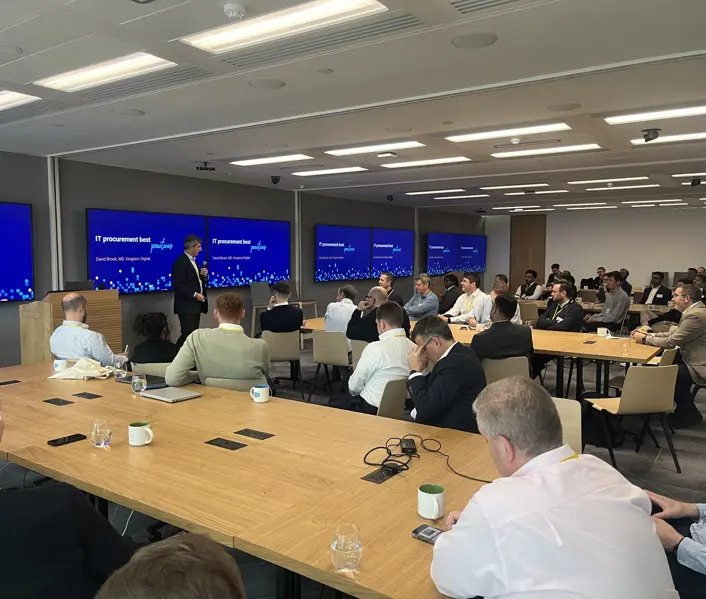
AI can help mid-market businesses to improve customer experience significantly. The latest Inflexion Digital & AI Exchange explored aosphere’s recent experience in this area.
At legal and compliance data subscription platform aosphere, the mission has always been to simplify complex legal and regulatory information. The firm’s global clients rely on it for accurate and up-to-date insight into jurisdiction-specific requirements – whether around data privacy, marketing restrictions, or netting laws.
It’s not straightforward, with the minefield of data around the topics growing by the day. Singapore’s data privacy protection rules for example span over 200 pages of aosphere analysis. While incredibly valuable, this depth can be daunting for time-pressed users. aosphere wanted to offer a smarter, more intuitive way for clients to engage with the content – one where they could type a natural-language question and get a direct, accurate response in seconds.
This ambition sowed the seeds of aosphere's new customer-facing AI tool. Recently soft launched as “Intelligent Search”, it has been built to enhance rather than replace the long-established product by returning clear, helpful answers while giving users transparency and traceability into how those answers were derived. Its journey has been supported by Inflexion, which in 2023 led a strategic partnership with aosphere’s then-incumbent parent Allen & Overy, a magic circle law firm, and Endicott, a US financial sponsor.
Defining the AI use case was a first step. aosphere needed a system that could handle real-world user queries – complete with typos, abbreviations, or ambiguity – and deliver answers grounded strictly in proprietary content. More than that, it had to show its workings, helping clients understand where the answers had come from. “Inflexion’s support has been instrumental in our AI journey, helping us to create meaningful results for our clients," said Claire Farley, Chief Product Officer at aosphere.
Most importantly, accuracy was non-negotiable. “There is a significant reputational risk to getting something wrong,” stresses Sam Lowe, a digital consultant appointed to aosphere from Inflexion’s network.
For all its positives, AI still contains risks such as potential for bias and hallucinations. To mitigate that, aosphere designed its system with AI and human oversight working in tandem.
Careful development
Aosphere identified three potential levels for transitioning from search to providing answers with AI. Level 1 was the lowest risk and involved pointing users to the most relevant sections of the underlying analysis. Level 2 would provide direct answers to questions using relevant documents, and Level 3 would provide the direct answers using reasoning, for example by leveraging documents across different jurisdictions and deducing themes from them.
“Initially we started with Level 1, but not providing a direct answer to a question felt like a disappointing customer experience. Our content is structured sufficiently to offer Level 2, so we are starting here – providing a direct answer to the user’s question plus pointers to the underlying content for transparency. The next stage will be to explore the feasibility of Level 3,” explains Claire.
Every project needs to start with evaluations, according to Sam, who shares the three phases aosphere undertook to go live:
- Will it work - In this initial sprint, aosphere created over 400 evaluation cases covering common, edge, and difficult user questions. The goal: achieve a 90% success rate on Level 2 queries – those directly answered within a specific section of the content. Importantly, aosphere resisted aiming for the most advanced features first but took an iterative approach. The content was well-structured enough to support grounded Q&A, so the focus was there. This phase took around one month.
- Customer test - With a functioning AI core, aosphere built a standalone demo and invited real users to test it. This helped gather feedback, benchmark performance, and refine the system before embedding it into the live product. During this phase, which took 2-3 months, internal tools for legal supervision and QA review were also developed.
- Scaled beta - Currently, aosphere is in soft launch with a small group of clients. The tool sits alongside the core platform, offering a search-driven alternative for users who prefer the traditional method. The development team has been deliberately kept lean – under 10 people – allowing for rapid iteration without unnecessary complexity.
Importantly, aosphere’s efforts aren’t about AI replacing a team – aosphere has avoided creating an “AI supervision department” by prioritising and clustering similar queries, allowing its lawyers to train the system efficiently and incrementally. It also isn’t necessarily about AI itself – aosphere has opted to leave that term out of the product’s name, opting instead to simply call it ‘Intelligent Search’.
Efforts are bearing fruit, with the platform opening up new commercial opportunities as aosphere discusses embedding the AI engine into the systems of third-parties to give their users direct access to aosphere intelligence.
There is also scope to monetise the tool on its own site. aosphere is initially bundling it into the core offering to minimise friction for clients and maximise adoption. Over time, aosphere may look to a usage-based or premium pricing model, particularly as advanced features like Level 3 multi-jurisdictional queries are explored.
While search was a logical entry point, the infrastructure aosphere has built now enables co-pilots to support content creation, agent-based tools for customer service, and AI-enhanced analytics to inform product development. It’s clear it’s only the beginning of aosphere’s AI journey, and Sam is enthusiastic about the future: “There is so much possibility which can be very strategic for the business.”
Jan Beitner, Director of Data & AI at Inflexion, says, “The team has created an AI product which is well equipped for providing regulatory information, helping aosphere to provide its clients with a better user experience.”
AI Governance, data protection and trust
Governance around AI is both a legal obligation and crucial to make improvements to the AI product. Every AI answer is labelled as such and paired with source links that show exactly where the information comes from. Where confidence is lower, users receive search results rather than full summaries – deliberate and to avoid misinformation. Behind the scenes, a review queue ensures high-priority queries are evaluated and refined over time by subject-matter experts, enabling continuous improvement.
Intellectual property has been ringfenced from public LLMs, and personal data is not processed through the system – but aosphere is mindful of evolving AI regulation, including GDPR, consumer law, and emerging AI-specific standards.




